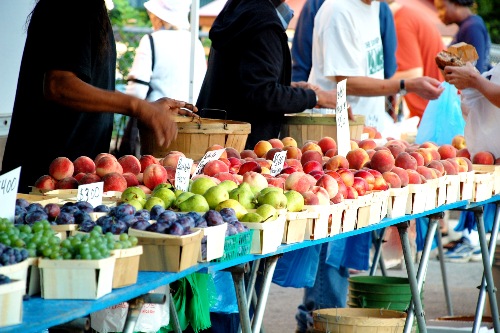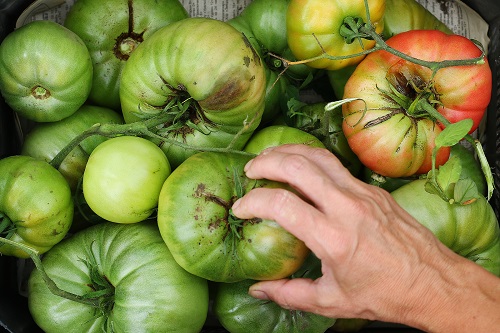The farmers market is a great place to get local foods and support the community. Before you go, there are a few things you can do to prepare for a successful trip! Keep reading to learn more.
It’s no secret that we love the farmers market! The market can be the perfect place to find fresh product and other homemade items. It’s a great way to find in-season fruits and veggies. Plus, it connects us to the farmers who grew the food. This can support our local economy. That’s pretty cool!
There are a few things to know before you go, and we’re letting you in on all the money-saving tips!
1. Find locations that double SNAP benefits
In Georgia, we have a program called “Fresh for Less.” This program matches your benefits dollar-for-dollar to double your food spending money! Find markets that double your dollars on the Wholesome Wave Georgia website here.
For all farmer’s market locations in your county, check out this Local Farmers Market Directory.
2. Shop for what’s in season
Seasonal food is cheaper to buy because it is what farmers are currently growing. Buying food that is in-season can save your family money in the long run! Seasonal produce is also more flavorful, which means your family will want more!
Shop smart year-round with the USDA’s Seasonal Produce Guide. Open and save our Georgia Seasonal Produce chart here. Simply click on the image, right-click, and “save image as.” If you’re using a smartphone, press and hold the image to add it to your photos.

3. Set a budget
Before you leave for the market, have a plan. For budgeting tips, check out this Save Money on Food blog. This will help you know how much you have to spend for the trip to the market. Knowing your budget ahead of time can reduce stress!
After looking through the seasonal produce guide, you may have some meal ideas. Use our Meal Planning Steps for Success blog to help you decide what ingredients you need before you go. Using a shopping list can help you save money, too!
Remember that labels like GMO-free and Organic should not scare you away from unlabeled options. They are voluntary certifications and do not tell us anything about the nutritional value of the food. If organic-labeled bags of produce don’t fit in your budget, don’t stress! Buy what works for your family.
For more on GMOs and Organic produce, read our blogs on What We Know About GMOs and Picking Produce.
4. Ask farmers for their advice
Interested in a food, but not sure how to prepare it? Ask the farmer! They may have recipe ideas for you. Talking to farmers can also give you the inside scoop on what will be sold later in the season. If you’re looking for a specific food and don’t see it, they may know when it will be harvested. Plus, they can teach you something new about how they grow food!

5. Be open to trying new or unusual looking produce
The farmers market is a great place to expose your family to new or unfamiliar foods! Many farmers offer fruits and veggies that are harder to find in the grocery store. Let your kids pick out one new food for you to enjoy together. If you’re unsure, ask the farmer for tips on how to prepare the food!
Be flexible with how the produce looks. We aren’t used to seeing “ugly” produce in grocery stores. However, a funky-looking fruit or vegetable still contains the same nutrients! Nature does not always make blemish-free foods, but our bodies love the nutrients just the same.

Did you learn something new about farmers markets? We love the option to support local farmers and double our SNAP dollars!
If you liked this blog, we’ve got you covered with two more:
Happy shopping!
Written by Melanie Ng, Ph.D. Candidate| Edited by Leslie Davis, MS, RDN, LDN, CDCES and the Nutrition Education Team
Posted: May 3, 2021

